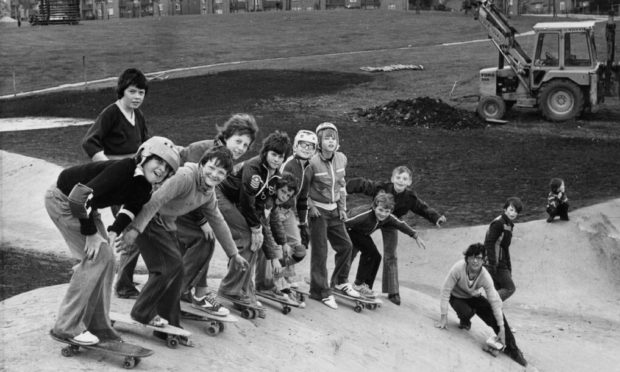All eyes will be on the skatepark again this week after skateboarding made its hit debut as an Olympic sport last month during the Tokyo games.
Skateboarding was one of four new sports alongside karate, surfing and sport climbing to be included at the 2020 Summer Olympics for the first time.
A controversial choice, the street sport has unashamedly rolled into the mainstream taking its place in the schedule alongside more traditional events.
Fearless skater Sky Brown is the youngest Olympian to ever compete for Team GB at the tender age of just 13.
With coverage of street and park events featuring competitors ranging from the age of 13 to 46, skateboarding has proved a surprise hit for games organisers.
But far from being the new kid on the block, skateboarding has a rich and diverse history – from California to Cruden Bay, skateboarding tore onto the global scene in the 1970s.
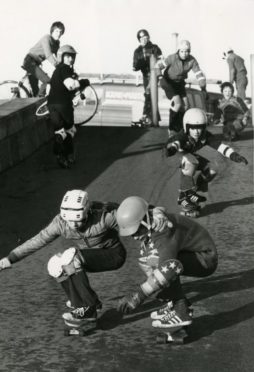
In this photo from Boxing Day 1977, these children took their new Christmas presents for a spin down at Aberdeen Beach Promenade.
Although skateboarding was becoming increasingly popular in the Granite City and across the north-east, there were no official facilities.
Instead, streets became skateparks and benches became makeshifts boxes.
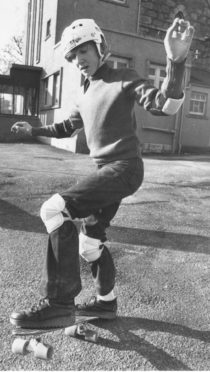
By February 1978, skateboarding was still soaring in popularity, and in the words of 14-year-old Mark Adams, above, “skateboard fever had hit Ellon”.
With more than 20 fellow youngsters keen to form a skateboard club in town, Mark approached PE teachers at Ellon Academy to help make it happen.
Mark hoped to find a hall where skaters could practice safely, but ultimately wanted to see a proper ramp built in the town.
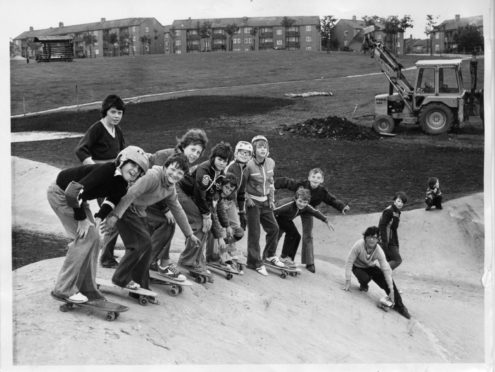
Young skaters in Aberdeen were more fortunate – a purpose-built skateboard rink opened at Heathryfold in July 1978.
But the £30,000 complex was closed again within weeks over safety concerns.
City officials were left red-faced when a team of professional skaters who travelled up to Aberdeen to put on a display refused to use the skatepark.
Calls were made to have the lumps and bumps smoothed out.
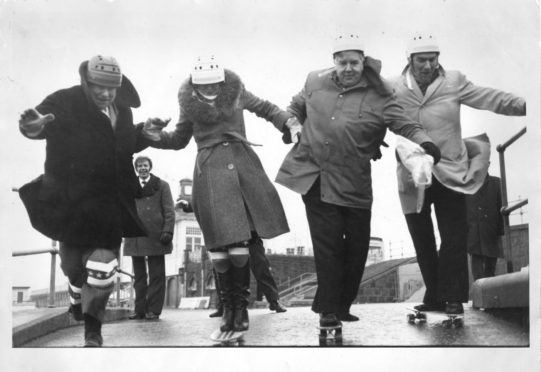
In this action shot from 1978, city councillors got down with the kids and teamed up for a performance down at Aberdeen Beach.
Not quite dressed for the occasion, from left, Baillie Richard Gallagher, Margaret Wilson, G Murray Park and Kennth Watmough, attracted some bemused looks as they skated, and ultimately tumbled, down the beachfront.
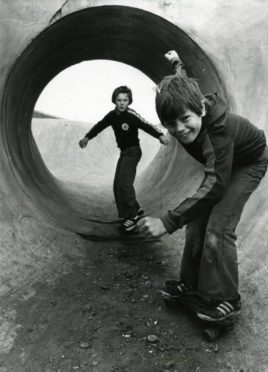
Fraserburgh youngsters Darrin Masson and Graeme Duthie try out their skills at the town’s skatepark in this photo ahead of a championship to be held in August 1979.
Skateboarding was so big in the Broch that the club boasted more than 200 members, and the coastal community became known as the skateboard capital of the north-east.
Fraserburgh was the first town in the north-east of Scotland to have purpose-built facilities including a skating bowl, thanks mainly to 16-year-old Billy Duncan.
Billy and his father, a town surveyor, had seen skateboarding facilities in London and Newquay, and were determined to have a similar park in their hometown.
Billy approached the council and after securing funding, the facility was built and attracted keen skaters from across the region.
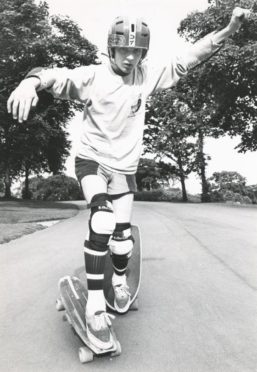
Talented skateboarders like Spence Nicol, 14, put Aberdeen on the map in 1979.
Aberdeen Grammar School pupil Spence had just been crowned the new Scottish junior and freestyle slalom skateboard champion.
The daring teen, performing a two-board tail wheelie in this photo, was practising ahead of the British junior championships at Kelvingrove Skatepark in Glasgow.
Granite City skateboarders were becoming “well-known nationally for their virtuosity on the boards” according to one skating expert in 1979.
He added that “they are famed for their stylish free skating and slalom skills” despite not having a proper skatepark of their own.
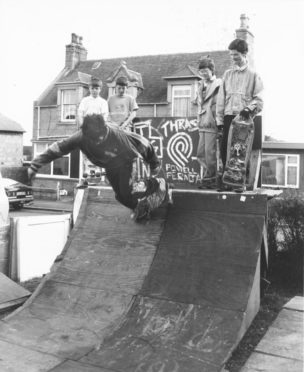
This heartwarming photo from 1989 shows Cruden Bay kids enjoying a skateboarding ramp which Alex and Edith Noble allowed to be built in their garden.
The kind couple allowed a 25-foot skating ramp to be built alongside their Serald Street property after complaints about skaters elsewhere in the village.
Mr Noble even helped the kids build the ramp and said: “We invited them in. We would rather have them here doing something they enjoy than have them hanging about getting into trouble.”
The ramp proved so popular with skateboarders that busloads of youths came from as far as Peterhead to put their skills to the test.
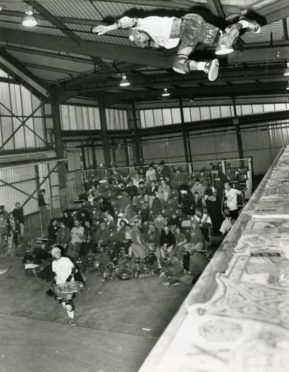
This dramatic photo of a skateboarder soaring over the crowd was taken during a competition at the Aberdeen Exhibition and Conference Centre in 1989.
Scotland’s biggest indoor skating ramp attracted hundreds of enthusiasts to the city from as far away as Brighton and London.
More than 800 competitors had a go on the ramp, but the overall winner was Pete Dosset of Bristol, with Aberdeen’s own Steve Park winning the under 16 competition.
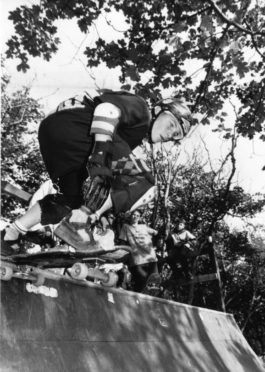
Cruden Bay skateboard club were celebrating in 1990 after fundraising £1700 to build a new ramp in the community.
Around 30 street-surfing youngsters were supported by villagers and parents in their endeavour for a safe practice area.
Hamish Hutton, 14, was first to try out the new ramp in this photo.
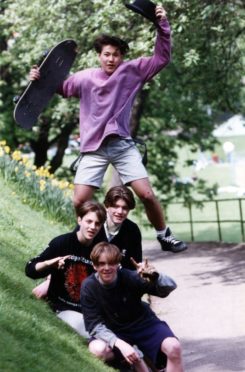
Union Terrace Gardens has always been a popular place in the city centre for enjoying leisure pursuits.
And its various paths, railings and steps attracted Aberdeen’s skaters in the 1990s.
From back, Chris Clark, Ben Terry, Alister Morrison and High Kirton were pictured in the park in 1992.
These days, city skaters can enjoy purpose-built skating facilities at Transition Extreme near the beach.
The modern extreme sports charity and social enterprise opened in 2007.
It has a dedicated space for skateboarding, BMXing and in-line skating, providing a safe and dedicated facility for potential future Olympians to test their mettle.
See more like this:
